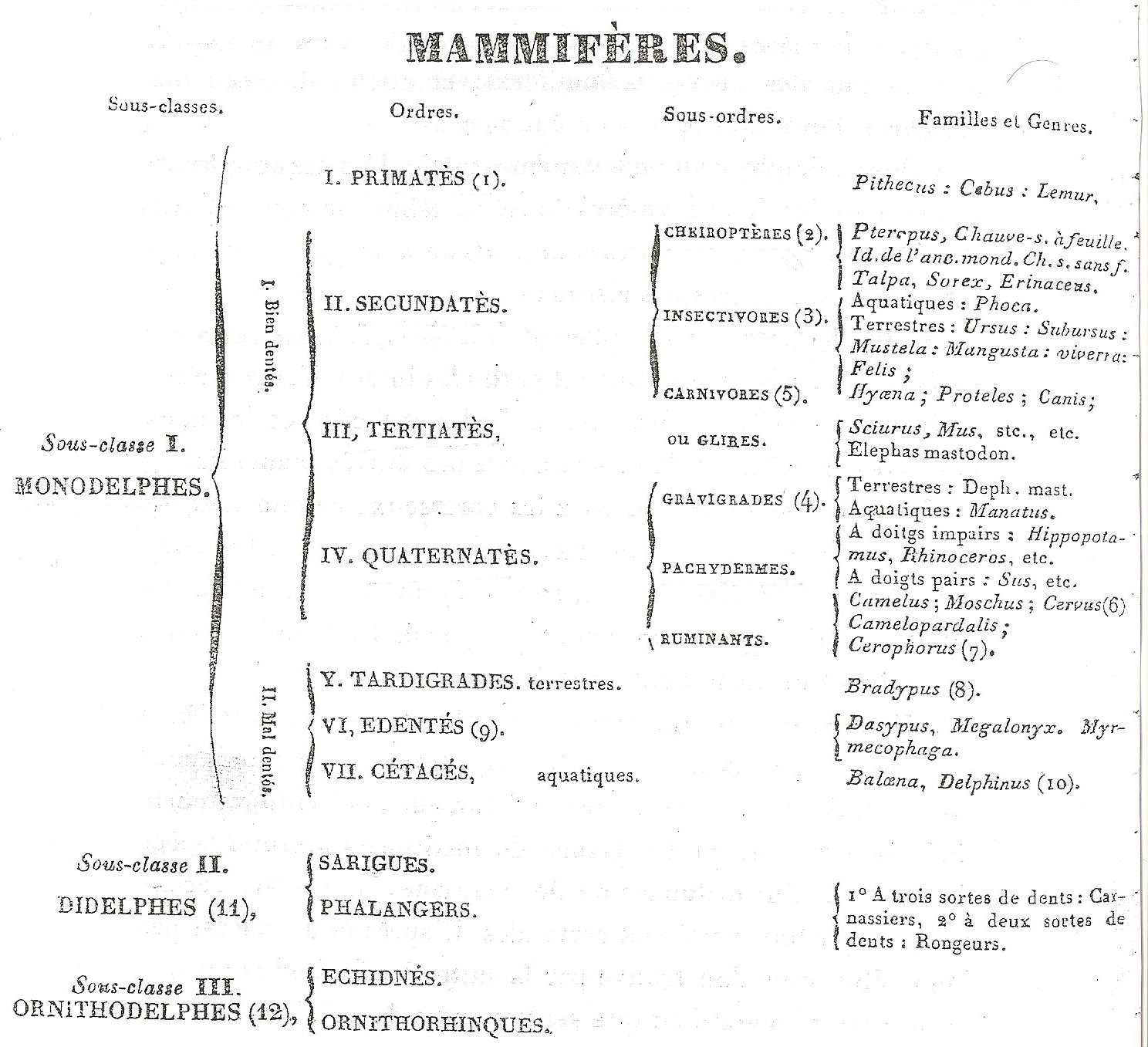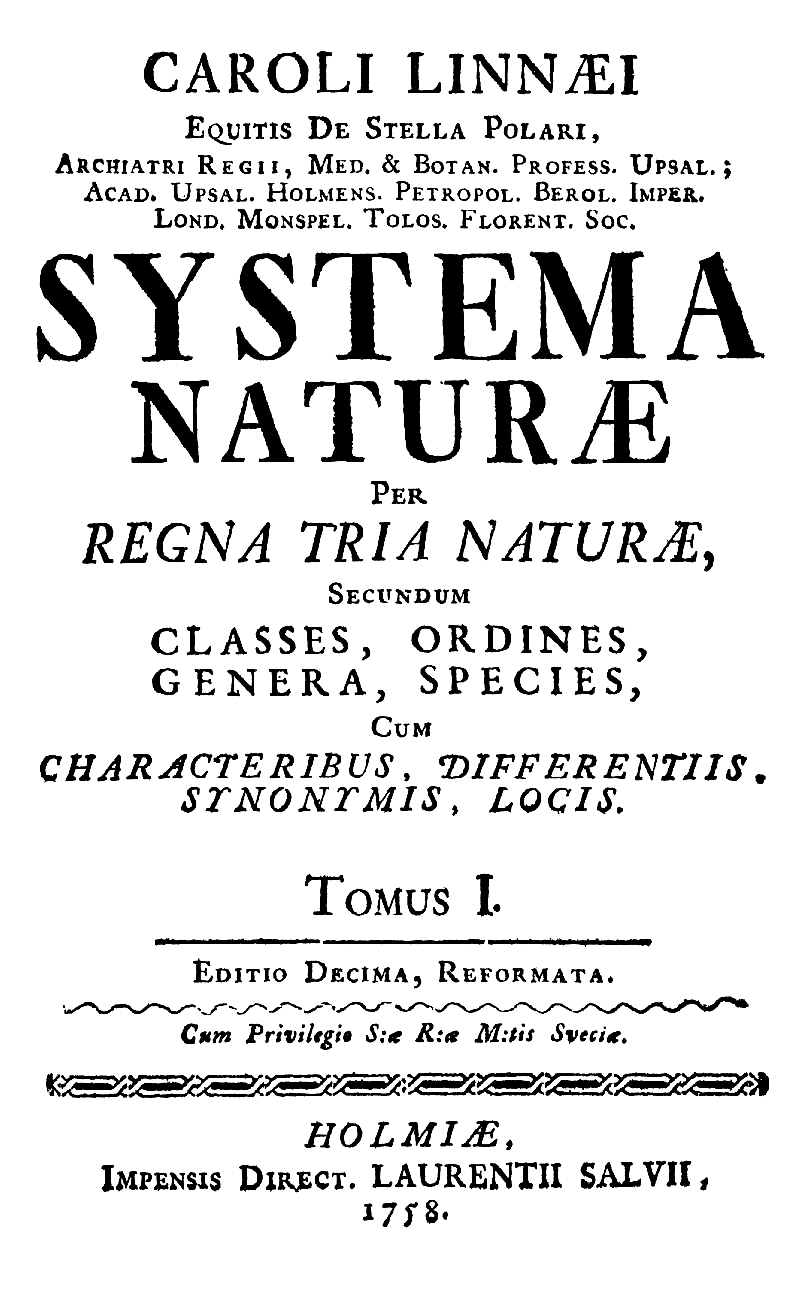|
Tertiates
Tertiates is an obsolete order of mammals created by Henri-Marie Ducrotay de Blainville in 1839, imitating Linnean nomenclature (Primates). It included the suborder Glires. See also * Secundates * Quaternates Quaternates is an obsolete order of mammals created by Henri-Marie Ducrotay de Blainville in 1839, imitating Linnean nomenclature (Primates). It included the suborders Gravigrada, Pachydermata, and Ruminantia Ruminants ( suborder Ruminanti ... References * BLAINVILLE, Henri-Marie Ducrotay de (1839): “Nouvelle classification des Mammifères” in ''Annales Françaises et Etrangères d’Anatomie et de Physiologie Appliquées à la Médicine et à l’Histoire Naturelle'', 3, pp. 268-269 Obsolete mammal taxa Mammal orders Taxa named by Henri Marie Ducrotay de Blainville {{mammal-stub ... [...More Info...] [...Related Items...] OR: [Wikipedia] [Google] [Baidu] |
Primates
Primates are a diverse order of mammals. They are divided into the strepsirrhines, which include the lemurs, galagos, and lorisids, and the haplorhines, which include the tarsiers and the simians (monkeys and apes, the latter including humans). Primates arose 85–55 million years ago first from small terrestrial mammals, which adapted to living in the trees of tropical forests: many primate characteristics represent adaptations to life in this challenging environment, including large brains, visual acuity, color vision, a shoulder girdle allowing a large degree of movement in the shoulder joint, and dextrous hands. Primates range in size from Madame Berthe's mouse lemur, which weighs , to the eastern gorilla, weighing over . There are 376–524 species of living primates, depending on which classification is used. New primate species continue to be discovered: over 25 species were described in the 2000s, 36 in the 2010s, and three in the 2020s. Primates hav ... [...More Info...] [...Related Items...] OR: [Wikipedia] [Google] [Baidu] |
Secundates
Secundates is an obsolete order of mammals created by Henri-Marie Ducrotay de Blainville in 1839, imitating Linnean nomenclature (Primates). It included the suborders Chiroptera, Insectivora and Carnivora. See also * Tertiates * Quaternates Quaternates is an obsolete order of mammals created by Henri-Marie Ducrotay de Blainville in 1839, imitating Linnean nomenclature ( Primates). It included the suborders Gravigrada, Pachydermata, and Ruminantia Ruminants (suborder Ruminantia ... References {{reflist * BLAINVILLE, Henri-Marie Ducrotay de (1839): “Nouvelle classification des Mammifères” in ''Annales Françaises et Etrangères d’Anatomie et de Physiologie Appliquées à la Médicine et à l’Histoire Naturelle'', 3, pp. 268-269 Obsolete mammal taxa Mammal orders Taxa named by Henri Marie Ducrotay de Blainville ... [...More Info...] [...Related Items...] OR: [Wikipedia] [Google] [Baidu] |
Quaternates
Quaternates is an obsolete order of mammals created by Henri-Marie Ducrotay de Blainville in 1839, imitating Linnean nomenclature (Primates). It included the suborders Gravigrada, Pachydermata, and Ruminantia Ruminants ( suborder Ruminantia) are hoofed herbivorous grazing or browsing mammals that are able to acquire nutrients from plant-based food by fermenting it in a specialized stomach prior to digestion, principally through microbial actions. Th .... See also * Secundates * Tertiates References {{reflist * BLAINVILLE, Henri-Marie Ducrotay de (1839): “Nouvelle classification des Mammifères” in ''Annales Françaises et Etrangères d’Anatomie et de Physiologie Appliquées à la Médicine et à l’Histoire Naturelle'', 3, pp. 268-269 Obsolete mammal taxa Mammal orders Taxa named by Henri Marie Ducrotay de Blainville ... [...More Info...] [...Related Items...] OR: [Wikipedia] [Google] [Baidu] |
Order (biology)
Order ( la, ordo) is one of the eight major hierarchical taxonomic ranks in Linnaean taxonomy. It is classified between family and class. In biological classification, the order is a taxonomic rank used in the classification of organisms and recognized by the nomenclature codes. An immediately higher rank, superorder, is sometimes added directly above order, with suborder directly beneath order. An order can also be defined as a group of related families. What does and does not belong to each order is determined by a taxonomist, as is whether a particular order should be recognized at all. Often there is no exact agreement, with different taxonomists each taking a different position. There are no hard rules that a taxonomist needs to follow in describing or recognizing an order. Some taxa are accepted almost universally, while others are recognized only rarely. The name of an order is usually written with a capital letter. For some groups of organisms, their orders may follo ... [...More Info...] [...Related Items...] OR: [Wikipedia] [Google] [Baidu] |
Mammal
Mammals () are a group of vertebrate animals constituting the class (biology), class Mammalia (), characterized by the presence of mammary glands which in Female#Mammalian female, females produce milk for feeding (nursing) their young, a neocortex (a region of the brain), fur or hair, and three ossicles, middle ear bones. These characteristics distinguish them from reptiles (including birds) from which they Genetic divergence, diverged in the Carboniferous, over 300 million years ago. Around 6,400 extant taxon, extant species of mammals have been described divided into 29 Order (biology), orders. The largest Order (biology), orders, in terms of number of species, are the rodents, bats, and Eulipotyphla (hedgehogs, Mole (animal), moles, shrews, and others). The next three are the Primates (including humans, apes, monkeys, and others), the Artiodactyla (cetaceans and even-toed ungulates), and the Carnivora (cats, dogs, pinniped, seals, and others). In terms of cladistic ... [...More Info...] [...Related Items...] OR: [Wikipedia] [Google] [Baidu] |
Henri-Marie Ducrotay De Blainville
Henri Marie Ducrotay de Blainville (; 12 September 1777 – 1 May 1850) was a French zoologist and anatomist. Life Blainville was born at Arques, near Dieppe. As a young man he went to Paris to study art, but ultimately devoted himself to natural history. He attracted the attention of Georges Cuvier, for whom he occasionally substituted as lecturer at the Collège de France and at the Athenaeum Club, London. In 1812 he was aided by Cuvier in acquiring the position of assistant professor of anatomy and zoology in the Faculty of Sciences at Paris. Eventually, relations between the two men soured, a situation that ended in open enmity. In 1819, Blainville was elected a member of the American Philosophical Society in Philadelphia. In 1825 he was admitted a member of the French Academy of Sciences; and in 1830 he was appointed to succeed Jean-Baptiste Lamarck in the chair of natural history at the museum. Two years later, on the death of Cuvier, he obtained the chair of comparative an ... [...More Info...] [...Related Items...] OR: [Wikipedia] [Google] [Baidu] |
Linnaean Taxonomy
Linnaean taxonomy can mean either of two related concepts: # The particular form of biological classification (taxonomy) set up by Carl Linnaeus, as set forth in his ''Systema Naturae'' (1735) and subsequent works. In the taxonomy of Linnaeus there are three kingdoms, divided into ''classes'', and they, in turn, into lower ranks in a hierarchical order. # A term for rank-based classification of organisms, in general. That is, taxonomy in the traditional sense of the word: rank-based scientific classification. This term is especially used as opposed to cladistic systematics, which groups organisms into clades. It is attributed to Linnaeus, although he neither invented the concept of ranked classification (it goes back to Plato and Aristotle) nor gave it its present form. In fact, it does not have an exact present form, as "Linnaean taxonomy" as such does not really exist: it is a collective (abstracting) term for what actually are several separate fields, which use similar appr ... [...More Info...] [...Related Items...] OR: [Wikipedia] [Google] [Baidu] |
Glires
Glires (, Latin ''glīrēs'' 'dormice') is a clade (sometimes ranked as a grandorder) consisting of rodents and lagomorphs (rabbits, hares, and pikas). The hypothesis that these form a monophyletic group has been long debated based on morphological evidence. Two morphological studies, published in 2001 and 2003, strongly support the monophyly of Glires. In particular, the 2003 study reported the discovery of fossil material of basal members of Glires, particularly the genera '' Mimotona'', '' Gomphos'', '' Heomys'', '' Matutinia'', '' Rhombomylus'', and '' Sinomylus''. Their description, in 2005, helped to bridge the gap between more typical rodents and lagomorphs. Data published in 2001, based on nuclear DNA, supported Glires as a sister of Euarchonta to form Euarchontoglires, but some genetic data from both nuclear and mitochondrial DNA have been less supportive. A study, published in 2007, investigating retrotransposon Retrotransposons (also called Class I transposable ... [...More Info...] [...Related Items...] OR: [Wikipedia] [Google] [Baidu] |
Obsolete Mammal Taxa
Obsolescence is the state of being which occurs when an object, service, or practice is no longer maintained or required even though it may still be in good working order. It usually happens when something that is more efficient or less risky replaces it. The international standard IEC 62402:2019 Obsolescence Management defines obsolescence as the "transition from available to unavailable from the manufacturer in accordance with the original specification". Obsolete also refers to something that is already disused or discarded, or antiquated. Typically, obsolescence is preceded by a gradual decline in popularity. Consequences Driven by rapid technological changes, new components are developed and launched on the market with increasing speed. The result is a dramatic change in production methods of all components and their market availability. A growing industry sector is facing issues where life cycles of products no longer fit together with life cycles of required components ... [...More Info...] [...Related Items...] OR: [Wikipedia] [Google] [Baidu] |
Mammal Orders
Mammals () are a group of vertebrate animals constituting the class Mammalia (), characterized by the presence of mammary glands which in females produce milk for feeding (nursing) their young, a neocortex (a region of the brain), fur or hair, and three middle ear bones. These characteristics distinguish them from reptiles (including birds) from which they diverged in the Carboniferous, over 300 million years ago. Around 6,400 extant species of mammals have been described divided into 29 orders. The largest orders, in terms of number of species, are the rodents, bats, and Eulipotyphla (hedgehogs, moles, shrews, and others). The next three are the Primates (including humans, apes, monkeys, and others), the Artiodactyla (cetaceans and even-toed ungulates), and the Carnivora (cats, dogs, seals, and others). In terms of cladistics, which reflects evolutionary history, mammals are the only living members of the Synapsida (synapsids); this clade, together with Sau ... [...More Info...] [...Related Items...] OR: [Wikipedia] [Google] [Baidu] |

.jpg)



_(white_background).jpg)